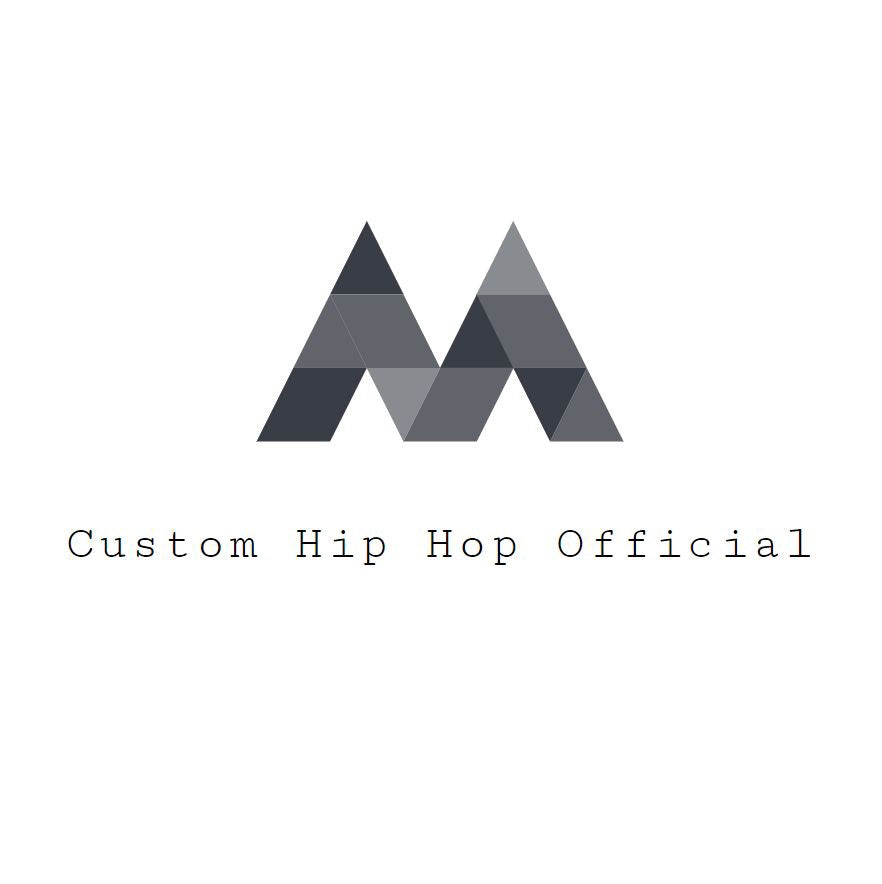Introduction: The Roots of Hip Hop Fashion
Brief History of Hip Hop and Its Influence
Hip hop has long been more than just a music genre; it's a complete cultural movement that has reshaped fashion trends globally. Its origins trace back to the 1970s in New York City, with block parties in the Bronx setting the stage for what would become a global phenomenon. Over time, hip hop artists became trendsetters, influencing how people dressed across the world. This movement wasn't just about the music or the lyrics; it was about self-expression through vibrant styles and bold fashion statements. The distinct looks of hip hop performers not only reflected their personal tastes but also often carried symbolic meaning tied to their music, beliefs, and the streets they came from. As hip hop culture spread, so did its fashion impact, leading to the creation of new trends and even new fashion lines dedicated to this influential style.

The Rise of Personal Branding in Hip Hop
Hip hop has always stood as more than just a genre of music; it's an entire culture that includes a unique sense of style and fashion. As hip hop grew more popular, the artists became brand ambassadors for their own identity. Personal branding in hip hop emerged powerfully as artists chose clothing and accessories to express their personalities and set themselves apart. Icons like Run DMC with their Adidas sneakers and LL Cool J with his Kangol hats weren’t just about the music—they were creating a brand around themselves. The birth of personal branding in hip hop revolutionized the industry, paving the way for artists to merge their image with their music. Today, personal branding has exploded, with hip hop artists launching their own clothing lines, endorsing fashion brands, and using their influence to drive trends. The rise of personal branding in hip hop is not just about fashion statements; it's about artists taking control of their image, leveraging their visibility, and connecting with fans on multiple levels.
The '70s and '80s: The Formative Years
Iconic Outfits and Accessories
The 1970s and 1980s were pivotal decades in shaping the foundation of hip hop fashion. During these years, iconic outfits encapsulated the vibrant spirit and the rebellious nature of the genre. Artists often donned tracksuits, known for their comfort and mobility, allowing the performers to breakdance and engage with the crowd with ease. Leather bomber jackets paired with bucket hats also became signature pieces, stamping a bold statement on the scene. The tracksuits were frequently accessorized with oversized gold chains and rings, symbolizing success and street credibility. Brand sneakers, especially adorned with fat laces in bright colors, were not just footwear but a canvas for self-expression. These accessories and outfits stood as emblems of cultural identity and defiance, and they went on to profoundly influence mainstream fashion and the way people dressed beyond the hip hop community.
Custom Hoop Earrings and Their Significance
In the '70s and '80s, custom hoop earrings became much more than a fashion statement; they symbolized strength and unity within the community. Crafted in various sizes, these earrings were often personalized with names, phrases, or even political messages, marking the wearer's identity and beliefs. Artists and fans alike embraced these accessories, making them iconic to hip hop's visual language. Their significance extended beyond mere decoration; they were an emblem of cultural pride and personal expression, resonating with the genre's emphasis on individualism and self-expression.
The 1990s: The Era of Excess
Bling and Logomania
The 1990s marked a dramatic transformation in hip hop fashion with the surge of 'bling' and logomania. During this time, rappers and hip hop artists started to flash more than just their musical expertise; they showed off their wealth and status with ostentatious jewelry and branded clothing. This era saw the explosion of oversized gold chains, diamond-encrusted pendants, grills for teeth, and large flashy watches as staples in hip hop attire. Not only did these accessories make a statement, but they also were seen as symbols of success. Logomania paralleled this trend, with individuals embracing clothing that featured prominent logos of high-end designers. The motifs and monograms of brands like Louis Vuitton, Gucci, and Tommy Hilfiger became part of the hip hop wardrobe, reflecting a new connection between fashion labels and the hip hop community. These trends were significant as they highlighted personal affluence and shifted hip hop fashion from being merely functional to a clear display of luxury and extravagance.
The Emergence of Hip Hop Fashion Brands
The 1990s witnessed a monumental shift in hip hop fashion, marked by the emergence of exclusive labels created by hip hop artists themselves. Driven by the culture's growing mainstream appeal, artists like Jay-Z, P. Diddy, and Wu-Tang Clan leveraged their fame to launch their own clothing lines. These brands, including Rocawear and Sean John, encapsulated the quintessential '90s hip hop aesthetic with baggy jeans, oversized t-shirts, and flashy logos. They were not just clothing lines; they were symbols of the hip hop lifestyle and a new form of personal expression. These fashion brands cemented hip hop's status not only as a musical genre but as a powerful cultural force shaping the fashion industry. They also laid groundwork for artists in the coming decades to combine their musical influence with entrepreneurial ventures, showcasing how music and fashion combined can create influential personal branding.
The 2000s: A Fusion of High Fashion and Streetwear
Collaborations with High-End Designers
The 2000s marked a significant turning point in hip hop fashion as it began to marry streetwear with high-end designer wear. Big names in luxury fashion recognized the influence and buying power of hip hop artists and their fans, leading to an array of influential collaborations. For instance, Louis Vuitton's partnership with Pharrell brought a fresh, flamboyant twist to the brand's classic elegance. Similarly, Gucci linked up with rappers like Lil Pump, who flaunted the iconic double G logo, signaling a significant shift from exclusivity to accessibility. These collaborations not only resulted in limited-edition pieces that became instant hits but also paved the way for a more inclusive approach to high fashion. They reinforced the notion that hip hop was not just a music genre but also a powerful cultural force shaping the fashion world.
The Influence of Music Videos on Fashion Trends
The 2000s witnessed a remarkable blend of high fashion with urban streetwear, largely propelled by the dynamic visuals of music videos. Hip hop artists became trendsetters, using music videos as a platform to showcase the latest in fashion. These videos reached millions, influencing viewers worldwide to adopt hip hop style icons. Brands took notice, with luxury fashion designers beginning to tap into the streetwear market. Music videos acted as runways, where viewers got a first glimpse of flashy sneakers, oversized shades, and designer gear. An iconic example includes the infusion of skateboard culture with high fashion, creating a new wave of relaxed, yet upscale clothing. Hip hop's fashion influence became so extensive that it not only changed how clothing was worn but also how it was marketed, with artists often leading the charge in brand collaborations. The era set the stage for a fashion revolution that continues to evolve with each new music video release.
The 2010s and Beyond: Global Expansion
Hip Hop's Global Influence on Fashion
Hip hop's appeal crossed oceans and cultures, becoming a global phenomenon in the 2010s. Artists from every continent embraced the style, each adding their own unique twist. From Asia to Europe, hip hop fashion influenced streetwear, with youths adopting oversized clothing, bold prints, and statement sneakers. International designers began incorporating elements of hip hop into their collections, signaling a respect for the genre's artistic impact. Social media platforms like Instagram and TikTok also played a crucial role in spreading hip hop fashion, as influencers and fans worldwide shared their outfits inspired by artists. Thus, hip hop fashion's reach in the 2010s wasn't just about music or the clothes. It was about a shared culture that resonated with millions, leading to a diverse and rich exchange of fashion ideas globally.
Influencer Culture and Social Media Impact
As the 2010s unfolded, hip hop's influence seeped beyond music and into fashion on a global scale. This era marked the rise of influencer culture, powered by the reach and impact of social media platforms. Artists and hip hop icons used these platforms to showcase their personal style, and thus, sewed the seeds of trends worldwide. Influencers who resonated with the ethos of hip hop became style ambassadors, their Instagram and Twitter feeds turning into digital runways. These social media mavens manipulated the visual aesthetics of hip hop attire to create looks that resonated with millions. They not only popularized certain styles but also played a pivotal role in launching and promoting new fashion brands. As hip hop fashion brands recognized the power of these influencers, partnerships emerged, leading to a symbiotic relationship that greatly impacted what people wore on streets across the globe. Consequently, this strengthening of influencer culture cemented social media as the new frontier for fashion's expansion.
Personal Branding: How Artists Market Themselves
The Role of Fashion in Artist Identity
In the world of hip hop, fashion is more than just clothing – it's a powerful form of self-expression. Artists use their style to speak volumes about their identity, without saying a word. It's common to see rappers showcasing their unique personas through bold outfits and statement pieces that tell their stories. The clothes they don, from luxury brands to streetwear, become synonymous with their image and music. As they rise in fame, their fashion choices set trends and offer fans a way to connect with the artists on a personal level. In essence, hip hop fashion becomes an extension of the artist's brand, carving out a niche that resonates with their audience and distinguishes them in a crowded industry.
Merchandising and Exclusive Apparel Lines
In the realm of hip hop, merchandising and exclusive apparel lines have become crucial for artists looking to establish and expand their personal brands. As performers transition into entrepreneurs, they often create or collaborate with clothing lines that resonate with their music and persona. These collections often include unique designs, limited-edition products, and special merchandise available only through specific channels or at concerts. This strategy turns fans into loyal customers, amplifies the artist's brand presence, and allows for a more personal connection with the audience. Through exclusive apparel, artists can also set trends and make a lasting impact on the fashion industry, further solidifying their influence beyond music.
Conclusion: Hip Hop's Enduring Impact on Fashion
The Ever-Evolving Nature of Hip Hop Style
Hip hop fashion has proved it is not just a trend, but a lasting cultural touchstone. It has continuously evolved, taking new forms and influencing mainstream fashion along the way. From the initial days of oversized silhouettes and bold colors to the modern embrace of luxury labels, hip hop style keeps reinventing itself. Today, it's a mix of nostalgia and innovation, with classic elements like gold chains paired with the latest sneaker releases. Versatile and dynamic, hip hop fashion's ability to adapt ensures its place in the future of style. As it merges with global trends and digital platforms, its evolution is a symbol of its resilience and enduring appeal.






